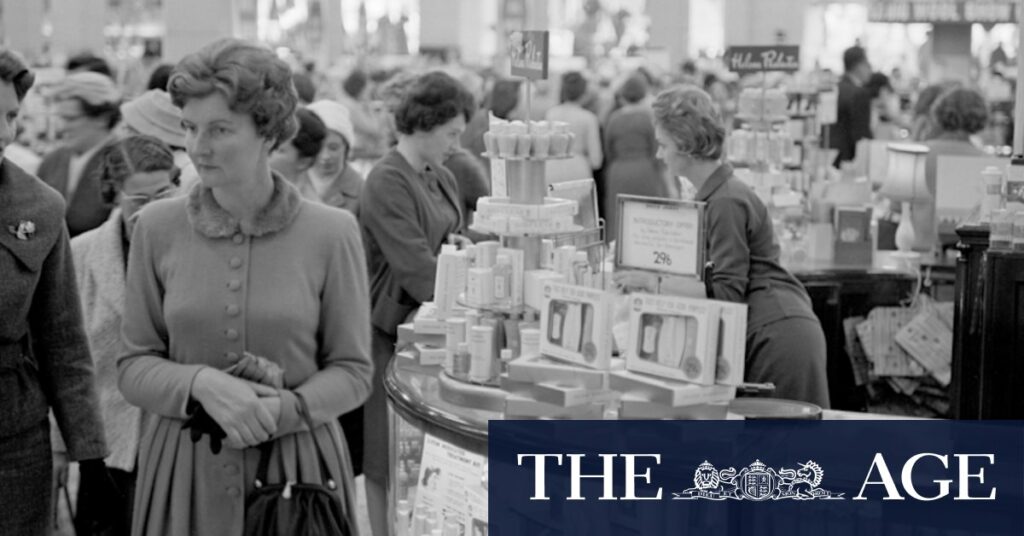
In the 1940s, Miranda Cole’s grandmother would leave her fur coat in the cloakroom of Myer in Bourke Street, Melbourne while she shopped. Years later, Miranda Cole’s mother continued the tradition, taking her daughters into the store for special occasions. These memories, rich with nostalgia, paint a picture of department stores as cultural icons. Yet today, Myer and David Jones face the challenge of appealing to a new generation of shoppers.
The past two decades have been particularly challenging for these retail giants. The global financial crisis, the pandemic, and the rise of online shopping have significantly altered consumer habits. As profits have dwindled, so too has the physical presence of these stores. Myer and David Jones have been forced to close numerous locations and rethink their strategies.
Adapting to a Digital Era
Paul Zahra, former CEO of David Jones, highlights the global nature of the issue. “Department stores have been structurally challenged around the world,” he notes. The focus has shifted towards digital innovation and redefining value propositions. Myer and David Jones are investing heavily in technology to stay relevant and are reimagining their loyalty programs to foster customer engagement.
Myer’s executive chair, Olivia Wirth, sees opportunity amidst the challenges. In January, Myer acquired Premier Investments’ clothing division, expanding its network significantly. Meanwhile, David Jones is banking on its new loyalty card partnership with Qantas Frequent Flyer to enhance customer retention.
The Role of Nostalgia and Tradition
Department stores have long been more than just places to shop; they are woven into the cultural fabric of cities. From the elegant high teas in Myer’s Mural Hall to the grandeur of David Jones’ Christmas displays, these stores have been sites of tradition and memory. Yet, as Patty Huntington, a fashion journalist, points out, “The mystique, the magic, and the profits have ebbed away.”
Historically, department stores mirrored societal changes, reflecting the rise of the middle class and the democratization of fashion. They introduced consumers to new trends and provided a venue for social aspiration. However, as the retail landscape evolves, these stores must find new ways to connect with consumers.
Facing Fierce Competition
The competition is fierce. Beauty retailer Mecca’s new flagship store in Melbourne has set a high bar with its extensive range of services and products. Similarly, fashion brands like Uniqlo and Cos offer trendy, affordable options that appeal to younger consumers. This “perfect storm of competition,” as Huntington describes it, poses a significant challenge to traditional department stores.
Moreover, the shopping habits of younger generations differ markedly from those of their predecessors. Gen Z, in particular, values real-world experiences over digital ones, a trend that department stores could leverage to their advantage. “Department stores need to offer the wow factor,” Huntington asserts.
Strategies for Engaging Younger Consumers
Both Myer and David Jones are keenly aware of the need to engage younger shoppers. Myer’s loyalty program, Myer One, is being revamped to enhance its digital experience. David Jones, under CEO Scott Fyfe, is pursuing an ambitious Vision 2025+ strategy, aiming to create an integrated omnichannel experience.
The focus is on creating personalized shopping experiences and leveraging data to understand consumer preferences. As Fyfe notes, “We want to create warm connections, and we want to drive customer lifetime value.”
Despite these efforts, the future remains uncertain. As market analyst insights suggest, a potential merger between the two retailers could be on the horizon if they fail to regain relevance in the current market. Yet, for now, loyal customers like Jaynie Anderson and Miranda Cole continue to support these iconic stores, keeping the legacy alive.
As Myer and David Jones navigate this complex retail landscape, the question remains: Can they successfully adapt to the changing times and capture the hearts of a new generation of shoppers?





